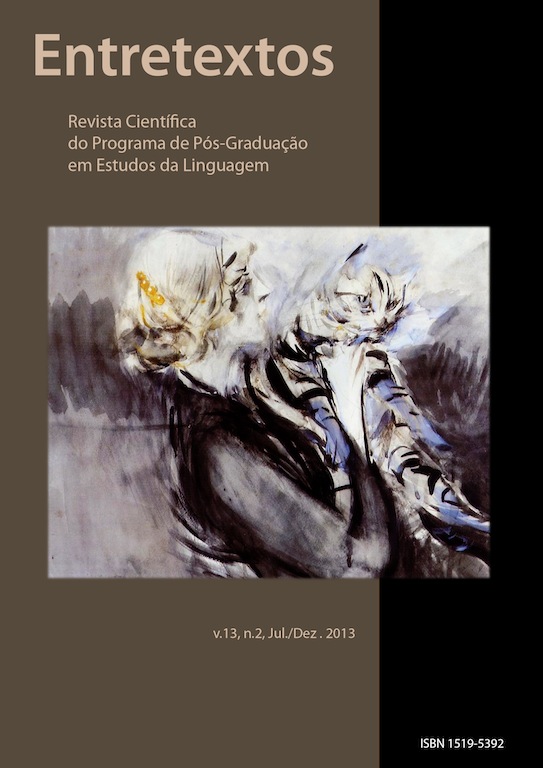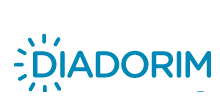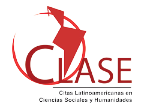The acquisition of the lexicon in English as a third language: a study on crosslinguistic influence
DOI:
https://doi.org/10.5433/1519-5392.2013v13n2p12Keywords:
Crosslinguistic influences, English as a third language, Lexical acquisitionAbstract
This study investigates crosslinguistic lexical influences in the acquisition of English as a third language. Early and late bilinguals’ learners of English as a third language and learners of English as a second language participated in the present study. All of the participants were native speakers of Brazilian Portuguese. Data obtained by means of two narrative tasks was analyzed with focus on the source of transfer in the production of English and on the factors that can interact with crosslinguistic influences, such as typology, recency, order of acquisition, and L2 status. The results of this study showed that the source of transfer at the lexical level for the learners of English as a third language is the native language, Brazilian Portuguese.
Downloads
References
BAYONA, P. The acquisition of Spanish middle and impersonal passive construction from SLA and TLA perspectives. In: LEUNG, Y. I. (Org.). Third language acquisition and universal grammar. Bristol (UK): Multilingual Matters, 2009. p. 01-29.
CARVALHO, A. M.; SILVA, A. J. B. Cross-linguistic influence in third language acquisition: the case of Spanish-English bilinguals` acquisition of Portuguese. Foreign Language Annals. v. 39 n. 2, p. 185-202, 2006.
CASTILHO, A. T. de. Nova gramática do português brasileiro. São Paulo: Contexto. 2010.
CHIN, D. H. Language transfer in the acquisition of the semantic contrast in L3 Spanish. In: LEUNG, Y. I. (Org.); Third language acquisition and universal grammar. Bristol (UK): Multilingual Matters, 2009. p. 30-54.
CENOZ, J. The effects of linguistic distance, L2 status and age on cross-lingustic influence in third language acquisition. In: CENOZ, J.; HUFEISEN, B.; JESSNER, U. (Org.). Cross-linguistic influence in third language acquisition: psycholinguistic perspectives. Clevedon: Multilingual Matters, 2001. p. 8-20.
CENOZ, J. The acquisition of additional languages. ELIA. Spain, v. 8, p. 219 224, 2008. COMRIE, B. Languages of the world. In: ARONOFF, M.; REES-MILLER, J. (Orgs.). The Handbook of Linguistics. Blackwell Publishing, 2002. Disponível em: Acesso em 10 maio 2012.
DE ANGELIS, G.; SELINKER, L. Interlanguage transfer and competing linguistic systems in the multilingual mind. In: CENOZ, J.; HUFEISEN, B.; JESSNER, U. (Org.). Cross-linguistic influence in third language acquisition: psycholinguistic perspectives. Clevedon: Multilingual Matters, 2001. p. 42-58.
DEWAELE, J.M. Activation or inhibition? the interaction of L1, L2 and L3 on the language mode continuum. In: CENOZ, J.; HUFEISEN, B.; JESSNER, U. (Org.). Cross-linguistic influence in third language acquisition: psycholinguistic perspectives. Clevedon: Multilingual Matters, 2001. p. 69-89.
DOUGHTY, C. J.; LONG, M. H. Handbook of second language acquisition. 2005.
ECKE, P. Lexical retrieval in a third language: evidence from errors and tip-ofthe-tongue states. In: CENOZ, J.; HUFEISEN, B.; JESSNER, U. (Org.). Crosslinguistic influence in third language acquisition: psycholinguistic perspectives. Clevedon: Multilingual Matters, 2001. p. 90-114.
FALK, Y.; BARDEL, C. Object pronouns in German L3 syntax: evidence for the L2 status factor. Second Language Research, v. 27, n. 1, p. 59- 82, 2011.
FOOTE, R. Transfer in L3 Acquisition: The role of typology. In: LEUNG, Y. I. (Org.), Third language acquisition and universal grammar. Bristol (UK): Multilingual Matters, 2009. p. 89-114.
FOUSER, F. J. Too close for comfort? Sociolinguistic transfer from Japanese into Korean as an L≥3. In: CENOZ, J.; HUFEISEN, B.; JESSNER, U. (Orgs.), Crosslinguistic influence in third language acquisition: psycholinguistic perspectives. Clevedon: Multilingual Matters, 2001. p. 149-169.
GASS, S. M.; SELINKER, L. Second language acquisition: an introductory course. 3 ed. New York and London: Routledge, 2008. 593 p.
GUIMARÃES, E. Multilinguísmo, divisões da língua e ensino no Brasil. Campinas: Cefiel/IEL Unicamp, 2005.
HAMMARBERG, B. Roles of L1 and L2 in L3 production and acquisition. In: CENOZ, J.; HUFEISEN, B.; JESSNER, U. (Orgs.), Cross-linguistic influence in third language acquisition: psycholinguistic perspectives. Clevedon: Multilingual Matters, 2001. p. 21-41.
HERWIG, A. Plurilingual lexical organization: evidence from lexical processing in L1-L2-L3-L4 translation. In: CENOZ, J.; HUFEISEN, B.; JESSNER, U. (Orgs.), Cross-linguistic influence in third language acquisition: psycholinguistic perspectives. Clevedon: Multilingual Matters, 2001. p. 115-137.
JARVIS, S.; PAVLENKO, A. Crosslinguistic influence in language and cognition. New York: Routledge, 2010.
JESSNER, U. Linguistic awareness in multilinguals: English as a third language. Edimburgh: Edinburgh University Press Ltd, 2006. 170 p.
JIN, F. Third language acquisition of Norwegian objects: interlanguage transfer or L1 influence? In: LEUNG, Y. I. (Org.), Third language acquisition and universal grammar. Bristol (UK): Multilingual Matters, 2009. p. 144-161.
KELLERMAN, E. New uses for old language: cross- linguistic and cross- gestural influence in the narratives of non- native speakers. In: CENOZ, J.; HUFEISEN, B.; JESSNER, U. (Orgs.), Cross-linguistic influence in third language acquisition: psycholinguistic perspectives. Clevedon: Multilingual Matters, 2001. p. 170-191.
LEUNG, Y. I. Second versus third language acquisition of tense and agreement in French by Vietnamese monolinguals and Cantonese-English bilinguals. In: ISB4: PROCEEDINGS OF THE INTERNATIONAL SYMPOSIUM ON BILINGUALISM, 4., 2005. p. 1344- 1352.
LLAMA, R.; CARDOSO, W.; COLLINS, L. The roles of typology and L2 status in the acquisition of L3 phonology: the influence of previously learnt languages on L3 speech production. In: Proceedings of the Fifth International Symposium on the Acquisition of Second Language Speech, 2007. p. 313-323.
MAGHSOUDI, M. Learning English as a Third Language: A Comparative Study between Iranian and Indian Bilinguals. South Asian Language Review, v. 18, n. 1, p. 28-41, 2008.
MAYER, M. Frog, where are you? New York: Dial Press, 1969.
MELHORN, G. From Russian to Polish: positive transfer in third language acquisition. ICPhS, v. 16, p. 6-10, 2007.
MONTRUL, S.; DIAS, R.; SANTOS, H. Clitics and object expression in the L3 acquisition of Brazilian Portuguese: structural similarity matters for transfer. Second Language Research, v. 27, n. 1, p. 21-58, 2011.
PERALES, S.; MAYO, M. del P. G.; LICERAS, J. M. The acquisition of L3 English negation by bilingual (Spanish/ Basque) learners in an institutional setting International Journal of Bilingualism, v. 13, n.1, p. 3-33, 2009.
RANONG, S. N.; LEUNG, Y. I. Null objects in L1 Thai-L2 English-L3 Chinese: An empiricist take on a theoretical problem. In: LEUNG, Y. I. (Org.). Third language acquisition and universal grammar. Bristol (UK): Multilingual Matters, 2009. p. 162-191.
RINGBOM, H. Lexical transfer in L3 production. In: CENOZ, J.; HUFEISEN, B.; JESSNER, U. (Orgs.), Cross-linguistic influence in third language acquisition: psycholinguistic perspectives. Clevedon: Multilingual Matters, 2001. p. 59-68.
ROTHMAN, J. L3 syntactic transfer selectivity and typological determinacy: the typological primacy model. Second Language Research, v. 27, n. 1, p. 107- 127, 2011.
ROTHMAN, J; AMARO, J. C. What variables condition syntactic transfer? A look at the L3 initial state. Second Language Research. v. 26, n. 2, p. 189- 218, 2010.
SCHMID, M. S.; DE BOT, K. Language attrition. In: DAVIES, A.; ELDER, C. (Orgs.). Handbook of applied linguistics. Blackwell Publishing, 2004. p. 235-261.
SHOOSHTARI, Z. G. Generative Syntactic Transfer in L2 and L3 acquisition via the channel of translation. English Language Teaching, v. 2, n. 1, p. 129- 149, 2009.
TREMBLAY, M. C. Cross-linguistic influence in third language acquisition: the role of L2 proficiency and L2 exposure. CLO/OPL, v. 34, p. 109-119, 2006.
Downloads
Published
How to Cite
Issue
Section
License
Entretextos adota a Licença Creative Commons Attribution 4.0 International, portanto, os direitos autorais relativos aos artigos publicados são do(s) autor (es).
Sob essa licença é possível: Compartilhar - copiar e redistribuir o material em qualquer suporte ou formato. Adaptar - remixar, transformar, e criar a partir do material, atribuindo o devido crédito e prover um link para a licença e indicar se mudanças foram feitas.




















